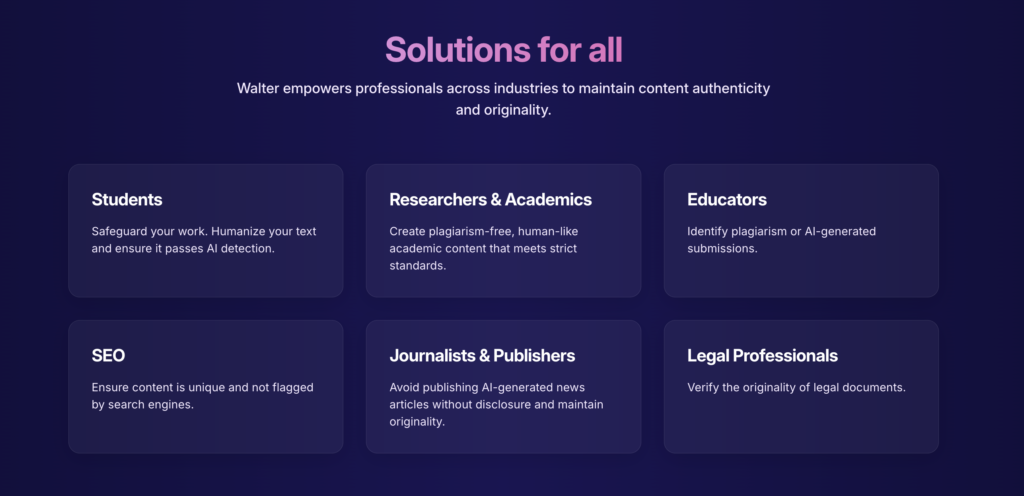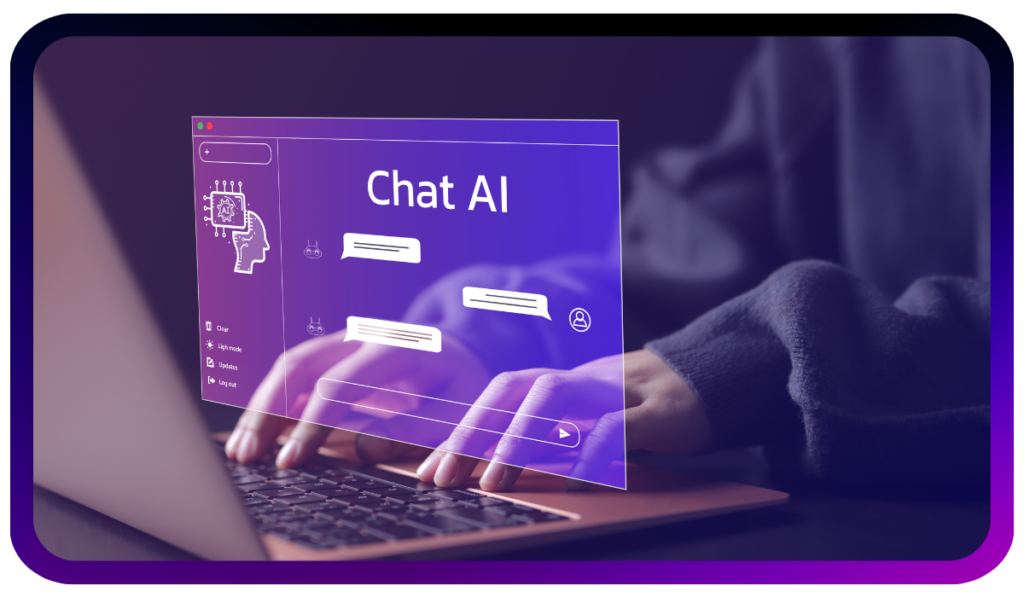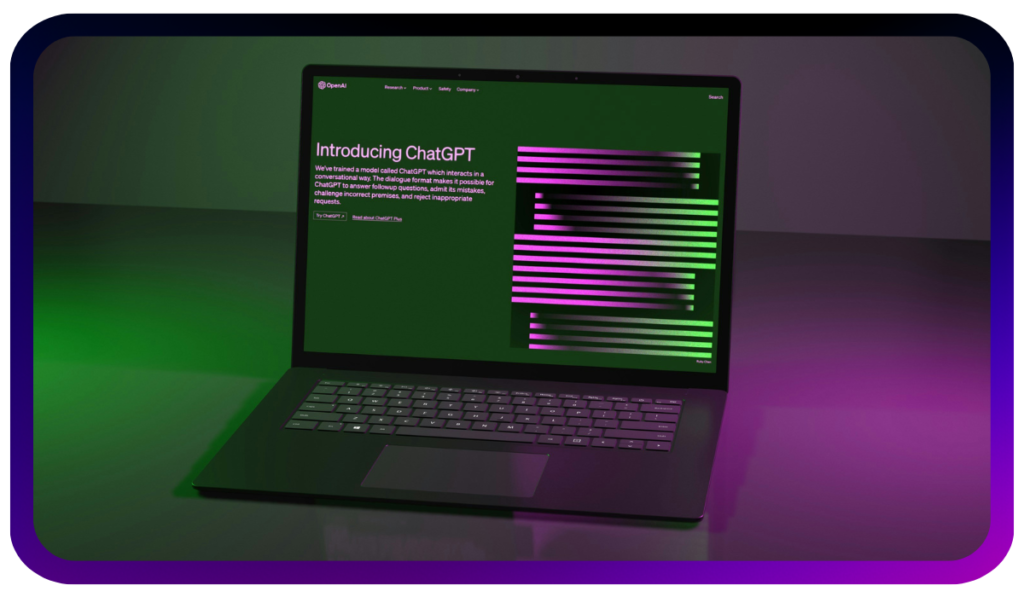AI-generated content has flooded classrooms, offices, and creative studios—and naturally, so have the tools that detect it. Whether you’re a student worried about Turnitin, a researcher safeguarding your work, or a content creator striving for originality, understanding how AI detectors work is more important than ever.
But what exactly goes on behind the scenes of an AI checker? Is detection accurate, and can it be bypassed? Let’s unpack the core mechanisms of AI detection, explore popular tools, and show how services like Walter Writes AI help refine your content so it reads naturally and human-like.
What Is AI Detection, and Why Does It Matter?
Why AI Detection Tools Exist
Now, AI tools such as ChatGPT and the new Gemini and Claude make it easier than ever to produce content in seconds — but this convenience raises big concerns in education, publishing, journalism, and business.
That’s why AI detection tools are being developed: to spot whether content was written by a human or a machine. In academia, AI detectors are supposed to stop students from handing in work they didn’t actually write.
In publishing and marketing, they assist companies in preserving their credibility by verifying that content is original and was carefully constructed. Even applications for grants and job resumes are checked by A.I. as institutions try to preserve trust.
Curious how AI fits into academia? We’ve explored that in Can Colleges Detect AI Essays?
How AI Writing Differs from Human Writing
At the core of these tools is the difference between human writing—organic, inconsistent, emotional—and AI writing, which tends to be polished, structured, and predictable.
Humans make mistakes, contradict themselves, and vary their sentence patterns. AI often avoids those quirks, instead producing:
- Repetitive phrasing
- Overused transitions (“moreover,” “in conclusion”)
- Predictable structure
- Lack of personal insight or emotion
These traits become the red flags that AI detectors use to classify writing.
How Do AI Detectors Work? Key Detection Methods
Perplexity & Burstiness – How AI Content Stands Out
Perplexity measures how unpredictable a piece of writing is. A sentence like “The stars twinkled awkwardly under the weight of nostalgia” may baffle an AI model because of its poetic construction, resulting in high perplexity. In contrast, “Artificial intelligence is changing the world” is quite predictable and will have a low perplexity score.
Burstiness, however, measures the variety of sentences. A human author might end a long, complex sentence with a short one for effect. But AI models tend to maintain a steady groove. Detectors deploy this pair of metrics in concert to tell human from machine writing. GPTZero, for instance, is built largely on either.
For a deeper dive into this, check out How to Make ChatGPT Sound More Human.
Sentence Structure & Repetition Patterns
AI tends to reuse the same sentence types:
“One reason is…”
“Another benefit is…”
“Furthermore…”
This robotic structure stands out over longer texts. Some AI models even repeat certain phrases word-for-word across generations. Detectors pick up on:
- Redundant transitions
- Echoed sentence openers
- Rigid paragraph formats
Advanced detectors can also measure rhythm and flow, comparing them against human writing baselines.
AI Fingerprinting – Identifying Language Model Patterns
A newer method of detection is AI fingerprinting, where tools attempt to match your text to patterns found in specific large language models (LLMs), such as GPT-3 or Claude.
Because each LLM has its own training data and style, their “fingerprints” are subtly embedded in the outputs. Some tools are attempting to reverse engineer these by feeding model outputs into machine learning detectors.
This method isn’t foolproof, but it shows promise for future detection. Still, as we explained in How AI Humanizers Bypass AI Detectors, advanced rewriting tools are always a step ahead.
AI Probability Scores – How Detectors Assign AI Percentages

Ever seen a report with “85% likely AI” on it? That’s the AI Probability Score, a numerical assessment of how much the text you wrote probably was machine-generated.
These are composite scores based on all those signals above: perplexity, sentence structure, syntax, and so on. But this score isn’t always dependable. An edited AI segment might get 30% or lower, and a human answer 80% based on formal tone or subject.
That’s why understanding the limits of detection tools is important, which we’ll outline in a moment.
Popular AI Detection Tools & Their Accuracy
GPTZero – How It Detects AI Writing
GPTZero has made a name for itself by focusing on burstiness and perplexity. It analyzes the structure of your writing and flags parts it considers too uniform or predictable.
- Pros: Easy to use, good at catching ChatGPT-style content
- Cons: May falsely flag structured academic writing
Learn more in our GPTZero Review.
Originality.ai – Is It Accurate?
This tool is aimed at marketers, bloggers, and SEO agencies. It analyzes content for AI origins while also offering plagiarism detection. But while powerful, it’s not perfect.
- May flag AI-assisted writing as fully machine-generated
- Struggles with well-rewritten AI content
We break this down in our Originality.ai Review.
Turnitin AI Detection – University AI Checker
Turnitin has long been the go-to plagiarism checker in higher ed, but its newer AI detection feature is less proven.
- Tends to overflag anything with academic tone
- Some universities are still testing its effectiveness
- Many students report false positives, especially with grammar apps or rephrased AI writing
Can AI-Generated Text Be Detected 100% of the Time?
Limitations of AI Detection Tools
Let’s be real—AI detection isn’t perfect. Most tools admit they’re only 80-90% accurate under ideal conditions. Here’s where they fail:
- False positives: Human-written text wrongly flagged
- False negatives: Edited AI text goes undetected
- Bias: Academic or technical writing often scores higher due to structure
So, if you’re relying on these tools to catch every AI-generated line, don’t. Even OpenAI pulled their own detection tool due to inaccuracy.
How to Reduce AI Detection Scores While Keeping Text Authentic
If you’re writing with help from AI, here’s how to lower your detection score while keeping your content natural:
- Rephrase paragraphs using varied sentence lengths
- Avoid overly formal language and “AI telltales” like “In conclusion.”
- Add real-world examples, opinions, and imperfections
- Use tools like TwainGPT to rewrite with a more human tone
- Don’t forget to use contractions and even minor slang when appropriate
Also, see our full guide: How to Make Your Essay Undetectable
How Walter Writes AI Helps Improve AI-Generated Content

Walter Writes AI is built specifically to refine AI writing so that it sounds authentically human. Instead of just paraphrasing, it restructures sentences, varies tone, and mimics the quirks of human authors.
- Adds nuance and emotion
- Breaks up overly uniform patterns
- Tailor the voice to your target audience
This tool is especially helpful for students and creators trying to stay original while using AI efficiently. Think of it as your final editor before submission.
If you want to stay ahead of AI detection tools, this content humanizer is worth a look.
Frequently Asked Questions (FAQ)
It analyzes predictability, sentence structure, and repetition to guess if the content is machine-generated.
Yes. They can misclassify human writing or miss AI text that’s well-edited.
Rewrite for tone and flow, add human quirks, and use Walter Writes AI or similar tools.
No. Plagiarism checks for copied content, and AI detection analyzes how it’s written.
Yes, it restructures AI-generated content to appear more natural, helping reduce detection scores.
Conclusion – Understanding AI Detection & How to Refine AI Text
AI detectors are improving fast—but so are tools to bypass them. While detection uses techniques like perplexity, burstiness, and fingerprinting, no method is completely foolproof.
If you’re worried about detection scores or just want your writing to sound more natural, refining your AI content is essential. Tools like Walter Writes AI bridge that gap—keeping your writing sharp, human, and undetectable.
Try Walter Writes AI now and start writing confidently, whether you’re submitting a paper, publishing a blog, or pitching your next big idea.









